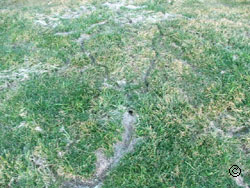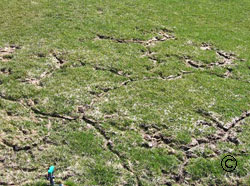When food sources dwindle, voles (small mouse-like animals, 4 to 8 inches long) damage woody plants by chewing on the bark layer of  a tree which interferes with the tree’s flow of nutrients. This girdling damage can be identified by gnawed strips of irregular, clearly defined tooth marks, about 1/16 to 1/8-inch wide. Occasionally stems may be chewed through and have a somewhat pointed tip. Junipers, other shrubs and trees that appear to be suffering from drought or disease should be examined closely at the base for signs of injury.
a tree which interferes with the tree’s flow of nutrients. This girdling damage can be identified by gnawed strips of irregular, clearly defined tooth marks, about 1/16 to 1/8-inch wide. Occasionally stems may be chewed through and have a somewhat pointed tip. Junipers, other shrubs and trees that appear to be suffering from drought or disease should be examined closely at the base for signs of injury.

Meadow (Microtus pennsylvanicus) and Prairie (Microtus ochrogaster) voles are common along the Front Range. Persistent snowcover hides volesfrom predators. Vole damage increases during heavy snowfall years. Voles tunnel through lawns and golf courses, leaving unsightly lumps and runways. Where tunneling is extensive the soil may have a spongy feel. Damaged lawns usually recover as the weather warms in the spring. If injury is severe, fill in runways with compost, rake smooth, fertilize, and water the affected area.
The lawn may be over seeded, if needed, in mid-April. Scattering grass seed over the damaged turf is ineffective. Sow your grass seed after working the soil to insure good soil-to-seed contact.
Manage voles by removing cover from the base of desirable plants or install tree guards to tree and shrub bases in the fall. Remove persistent snow from the edges of North or East facing lawns to prevent tunneling damage to turf.
For more information, see the following Planttalk Colorado™ video(s).



